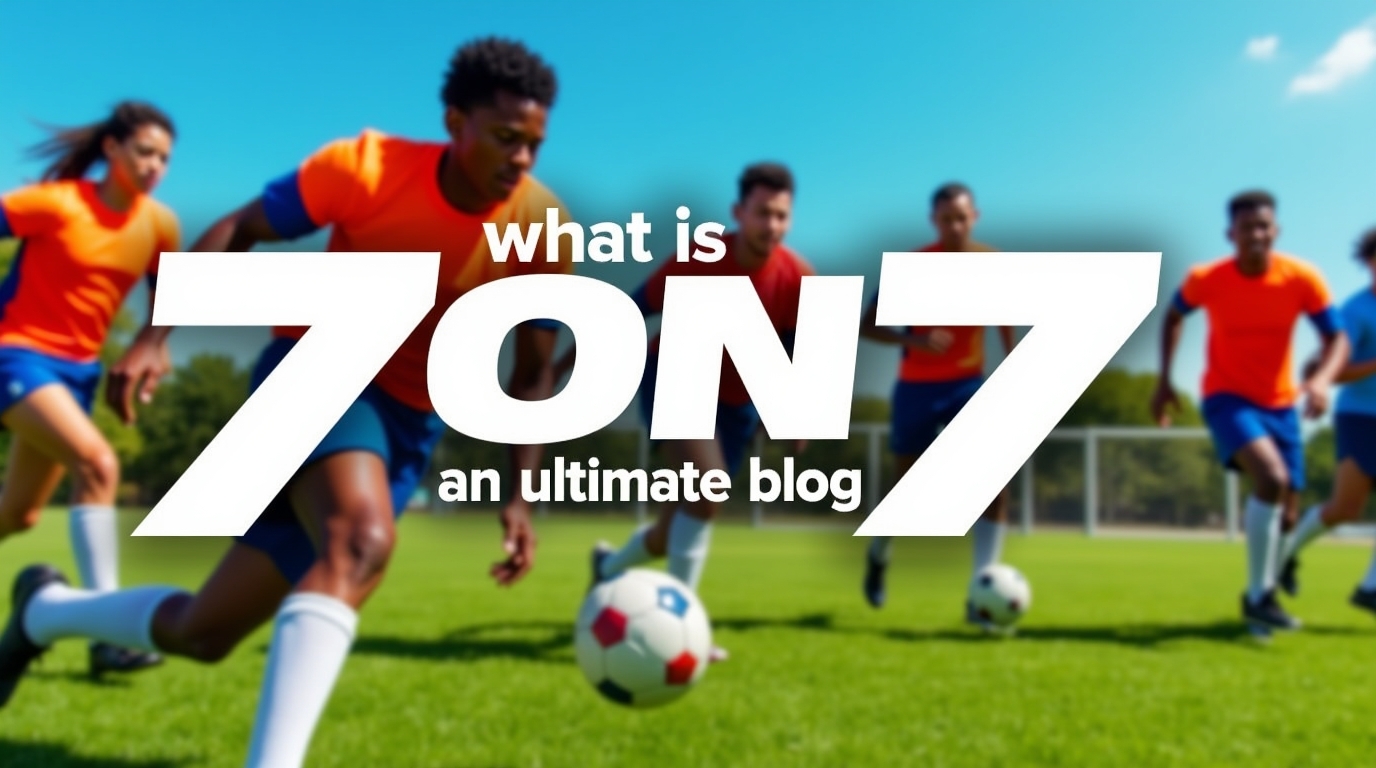7v7 Football: Bridging Tradition and Modern Football Culture

Strong 8k brings an ultra-HD IPTV experience to your living room and your pocket.
In the evolving world of football, a new format has quietly carved out a significant role in shaping the game’s future. 7v7 football, once seen as just an offseason activity, is now much more than that. With its focus on speed, precision, and strategy, it’s become a cultural phenomenon with competitive leagues, elite showcases, and a growing influence on recruiting and player development. But beyond its immediate appeal, 7v7 football may hold the key to football’s future.
What Sets 7v7 Football Apart?
Unlike traditional 11-on-11 football, 7v7 is played with seven players per team in a non-contact format. The game strips away the line of scrimmage, running plays, and the physical demands of blocking and tackling, leaving a faster, more tactical style of play. Here’s what makes it unique:
Position-Specific Focus:
7v7 primarily revolves around quarterbacks, wide receivers, tight ends, and defensive backs. Without the distraction of linemen or running backs, the spotlight is on passing accuracy, route running, and defensive coverage.
Fast, High-Scoring Action:
Games are typically played on a shortened field (40x50 yards), creating a fast-paced environment where quick touchdowns are common. Possessions are shorter, and games often have higher scores, making them thrilling for spectators.
Game Structure:
Teams have a limited time to snap the ball, usually around 4-5 seconds, which forces quarterbacks to make quick decisions. This speed-oriented structure enhances player reaction times and on-field awareness, making it an excellent developmental tool.
The Role of 7v7 in Player Development
What truly makes 7v7 football special is its role in enhancing individual skill development. For young players, it’s not just about winning games—it’s about mastering fundamentals and standing out to recruiters.
1. Quarterbacks: Quick Decisions and Accuracy
With no pass rush to worry about, quarterbacks can focus on reading defenses, finding open targets, and improving throwing precision. The condensed timeframe to release the ball develops their ability to process information quickly, a skill that translates directly to full-contact games.
2. Wide Receivers: Route Precision and Hands
Wide receivers benefit immensely from 7v7 play. With defenders closely covering them, they must execute crisp routes, improve footwork, and develop consistent hands to make contested catches.
3. Defensive Backs: Coverage and Ball Skills
For defensive backs, 7v7 is a masterclass in one-on-one coverage, reading quarterback intentions, and ball tracking. With no line of scrimmage distractions, they sharpen their anticipation and reaction times.
The lack of tackling doesn’t diminish the skill-building potential. Instead, it creates a setting where players can polish the finer points of their craft in a competitive environment.
Why 7v7 is Changing the Football Landscape
While originally designed for offseason training, 7v7 football has grown into a platform with its own identity and cultural relevance. Here's why:
1. Scouting and Recruiting Hotspot
College recruiters have embraced 7v7 tournaments as a vital part of their evaluation process. Events like Pylon 7v7 and Battle 7v7 attract top talent from across the country. Scouts can observe players in a high-pressure, competitive setting where individual performance is magnified.
For players, 7v7 showcases offer a chance to earn scholarship offers and gain exposure through media coverage, livestreams, and highlight reels shared on social media.
2. Community and Youth Participation
7v7 leagues have fostered tight-knit football communities in cities and regions across the country. The rise of grassroots participation means that even elementary and middle school players have access to competitive teams and events, helping them develop earlier.
With concerns about the risks of full-contact football, many parents view 7v7 as a safer alternative for younger players, which has fueled its rapid growth at the youth level.
3. A Social and Media Phenomenon
In the age of social media, 7v7 has created its own digital footprint. Highlights of jaw-dropping catches, precision throws, and lockdown defensive plays spread quickly across platforms like Instagram and Twitter. This virality has increased its popularity among younger generations and boosted event visibility.
The Future: What’s Next for 7v7 Football?
As 7v7 football continues to expand, several exciting possibilities lie ahead:
1. Pathway to Professional Opportunities
Could 7v7 evolve into a professional sport? The answer isn’t clear yet, but the growing infrastructure of leagues, sponsorships, and media partnerships suggests it’s possible. Just as flag football is being considered for the Olympics, 7v7 could carve out its own space in the world of professional sports.
2. Global Expansion
American football is gradually gaining traction internationally, and 7v7 may be the bridge to bring it to more regions. The game’s simplified structure and minimal equipment requirements make it ideal for introducing football to new audiences without the logistical challenges of full-contact play.
3. Tech-Driven Development
The future of 7v7 could involve advanced analytics and wearable technology to help players improve. Imagine training sessions where athletes receive real-time data on their movement, decision-making, and performance under pressure, allowing coaches to tailor individualized development plans.
4. Influence on Full-Contact Football
As players refine their passing and coverage skills through 7v7, traditional 11-on-11 football could see an evolution in its play style. The pass-heavy strategies and rapid decision-making of 7v7 may become more common at all levels of the game, from high school to the NFL.
Challenges: Will 7v7 Always Be a Complementary Sport?
Despite its success, 7v7 faces some criticism and obstacles, including:
Limited Physical Development: Without blocking or tackling, some argue that players may miss out on key aspects of physical conditioning and toughness that full-contact football requires.
Recruiting Pressure on Young Athletes: The intense focus on individual performance at 7v7 showcases can sometimes create unhealthy pressure on high school players to prioritize personal success over team development.
However, most coaches see 7v7 as a valuable supplement to traditional football, not a replacement. The key lies in balancing participation in both formats.
Final Thoughts: 7v7 Football’s Lasting Impact
7v7 football has transformed from a niche offseason workout to a legitimate player development pipeline and cultural movement. As its influence grows, it’s poised to leave an indelible mark on football, blending skill development, youth engagement, and media presence in ways that align with modern sports culture.
Whether you’re a player, coach, or fan, 7v7 offers something for everyone—speed, excitement, and the potential to shape football’s next generation.
What do you think? Is 7v7 the future of football, or will it remain a training ground? Join the discussion below!
Note: IndiBlogHub features both user-submitted and editorial content. We do not verify third-party contributions. Read our Disclaimer and Privacy Policyfor details.


